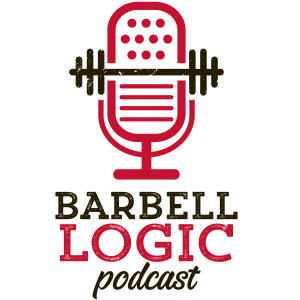
I Want to Lose Weight & Gain Muscle pt 1 - Beast over Burden - #478
 2023-08-29
2023-08-29
I want to lose weight and gain muscle - don't we all!
What is possible and what does this process look like over time? We explore this in a 2-part podcast series.
Andrew & Niki explore the journeys of different "typical" Barbell Logic clients and what these processes look like.
Lose Weight and Gain Muscle - the GoalJust about everyone who comes to a fitness goal wants more muscle (maybe strength) and less bodyfat. Almost no one wants to get stronger at any cost.
How do we conceptualize this and help clients progress?
This is the goal, not the process. Let's first examine the goal then look at the process.
It's important to flesh this goal out. Is the client looking back to a past body (e.g. high school or college)? How does this look? How does this body perform? What feelings are associated with the body (both physical and emotional)?
Or does the client have some idea in mind that he or she has never achieved - maybe a celebrity or influencer. Similar to the above, how does this body look, feel, and perform?
Making this concrete helps really refine the goal and let's the coach better understand what the client is looking for.
Some discussion may need to occur about the reality of the goal. The client may be looking at someone with extreme genetics at a snapshot of that person's life. This person could have a different body type. Lastly, this may involve more work than the client actually wants to do and take longer than the client expects.
This does not mean that we shoot the client's goals down or say "that's not possible." It's a discussion about what that process might look like and bringing some experience to the goal.
This brings us nicely to the process. What might the journey look like?
Lose Weight and Gain Muscle - the ProcessWhile people may have unrealistic goals (make me look like Dorian Yates) it's typically not the goal that is unrealistic, per se, but the expected time and work required.
Clients need to begin building training and nutrition habits. They need to build up, refine, and solidify these habits that, over time, will lead to lasting results.
While the end goal remains in mind, these habits serve as the building blocks to the for the cathedral of health and fitness the clients want. The week, month, or even 3-month horizon needs to turn into the 6-month, year, years, and really lifelong process of health and fitness.
These are the daily habits of eating enough protein and vegetables, avoiding the extra calories that lead to weight gain, and getting in the gym and getting the work done when you don't want to.
These may be unglamorous but they're truly glorious.
This also means separating times where you focus on adding flesh (muscle, please) and when you focus on losing flesh (fat, please). As Layne Norton says, if you chase two rabbits, you catch none. The lifelong goal of getting leaner will involve periods where you gain weight and periods where you lose weight, with healthy habits during both.
Niki and Andrew begin an investigation (that will continue next week) of different clients and what the journey might look like. Let's examine the first client.
Lose Weight and Gain Muscle - Underweight Middle-Aged ManWe begin with John, a 30-year old man who is 5'10" and 170 pounds. He played basketball when he was younger, dabbles in the gym and enjoys physical activities on the weekend. Having finally worked his way up to a job where he can afford coaching, he's ready to invest in professional coaching to meet his goals.
John begins with linear progression with a few compound lifts, allowing himself to learn technique, build the habit of training, and see the weight go up on the bar. As the weight increases, he learns how to grind on heavier weights.
With nutrition, he increases his calories, but only slightly. This might mean adding an extra 300 calories a day. This also means prioritizing protein, if he doesn't eat enough, and shifting more calories toward whole food sources.
As the PRs slow - as LP and early intermediate gains come to an end - reexamining metrics can help. Driving up the weight won't happen as much, so looking at other metrics can help keep the big picture in mind (remember, he didn't sign up to get a 600 pound deadlift - though he may eventually get one).
This could be a time to cut, allowing him to see some of the muscle he has gained. It could be a time to maintain, to allow for a leaning out but less quickly.
It probably is not a great time to take him from 190 or 200 to 225 or higher. Unless his goals have radically shifted, this plan utterly fails to meet his goals.
Having built the initial habits of training and nutrition, these habits get built upon, metrics get refined, and progress continues though slows.
Get Matched with a Professional Strength Coach today for FREE!
No contract with us, just commitment to yourself: Start experiencing strength now: https://store.barbell-logic.com/match/
- Matt on Instagram
- Niki on Instagram
- Andrew on Instagram
- Barbell Logic on Instagram
- Podcast Webpage
- Barbell Logic on Facebook
- Or email podcast@barbell-logic.com
More Episodes
 2024-11-12
2024-11-12
 2024-10-29
2024-10-29
 2024-07-30
2024-07-30
Create your
podcast in
minutes
- Full-featured podcast site
- Unlimited storage and bandwidth
- Comprehensive podcast stats
- Distribute to Apple Podcasts, Spotify, and more
- Make money with your podcast
It is Free
- Privacy Policy
- Cookie Policy
- Terms of Use
- Consent Preferences
- Copyright © 2015-2024 Podbean.com




